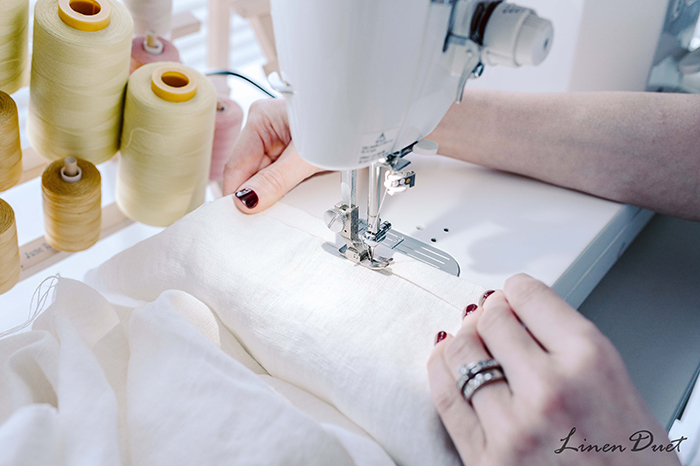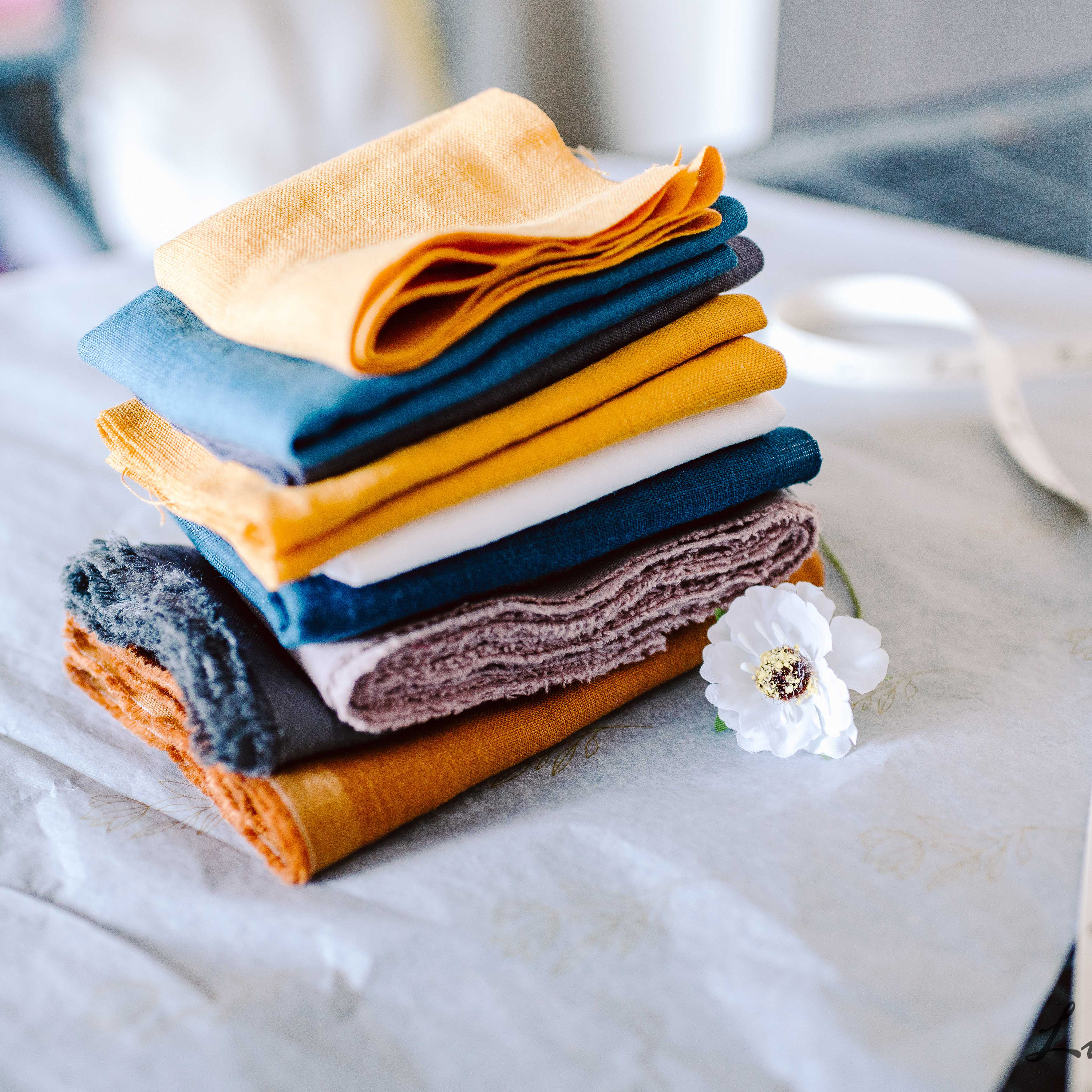Successful Sewing With Linen Fabrics
Before the advent of modern synthetic fabrics, natural fibers were the only fibers to be had for sewing. Even today dressmakers, tailors, and decorators are drawn to the beauty of natural fibers from animals (wool, alpaca, mohair) and plants (cotton, linen, hemp.) Let us consider the sewing possibilities of just one of these natural fibers: linen, made from the flax plant.
Properties of Linen Fabric
Linen fabrics are absorbent and quick drying, making them ideal for summer clothing as well as for dish towels. In fact, linen fibers can absorb up to 20% of their weight in moisture! The fibers are durable, so they produce very little lint (excellent for handkerchiefs and dish towels.) Historically, linen was used for shirts, nightgowns, and most summer outer clothing until cotton became more readily available. It allows air circulation for comfort in hot weather.

Linen can be woven coarsely, as in fabric used for counted thread embroidery, or extra fine as in handkerchief linen. In between are weights appropriate for blazers, trousers, dresses, and much more. Keep in mind that linen wrinkles easily, however, due to the lack of elasticity in the fiber. It drapes over the body rather than clinging, adding to summer comfort.
Cutting, Sewing, and Pressing Linen
Preshrink your fabric before cutting out garments, since linen can shrink.
Straighten the fabric by pulling a crosswise thread near the cut edge. Cut along the straight line of the pulled thread and fold the fabric in half lengthwise. Pin the garment pattern to the fabric using sharp pins and cut using sharp shears. Mark any pattern markings with a water soluble marker, tailor’s chalk, or dressmaker pencil.
Sew with all-purpose thread and a sharp point or universal point sewing machine needle. Finish all raw edges with an overlock or zigzag stitch, hand overcasting, or seam binding, since linen will fray if left unfinished.
Press as you sew, pressing all seams oven before they are crossed by another seam. Linen requires a hot iron, hotter than even cotton. A non-stick sole plate for the iron is recommended for ease of ironing and pressing without marking or scorching the fabric. Once pressed, linen will keep a crease well.
Linen Clothing
Lightweight linen is wonderful for heirloom sewing. Combine with cotton lace for ladies’ blouses, delicate lingerie, or baby dresses. Lightweight linen is also great for shadow embroidery and smocking.
Heavier linen is good for men’s shirts or ladies’ dresses. Pleats and gathers are easy to do in crisp linen. Adding a lining to dresses and skirts helps reduce wrinkling. Hopsack linen is heavy enough for tailored blazers and suits.
Natural linen has light gray/taupe color. Linen also can be bleached to a white or off white or dyed in brilliant and durable colors. A linen sundress, shirt dress, or dress shirt can add luxury to last season’s wardrobe.
Linen for the Home
Linen has become a generic term for all household textiles: sheets, towels, tablecloths, etc., even though many of those items are now made of cotton or cotton/polyester blends. You can still choose to use linen for your household linens.
(At Linen Duet, we use natural linen to create bedding and other house textiles)

With linen fabric by the yard, you can measure a dining room table and create a tablecloth that is just the right size. Trim with a simple hem or use Italian hemstitching, cross stitch embroidery, or other needlework to create an heirloom look. Sew pillowcases and stitch monograms on the hems for a special wedding gift. Make linen dish towels, place mats, or aprons to coordinate with your kitchen décor.
Linen is durable and washable, so any sewing you do with this versatile fabric will give you years of beautiful service. Like fine wine, linen becomes better with age. Laundering makes it ever more lustrous and soft. Try sewing a linen top or towel and see how you like it. Then move on to a bigger project. Enjoy this natural fabric for your modern lifestyle.


